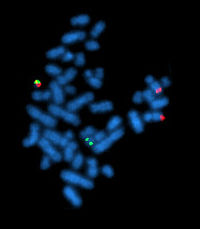
Photo from wikipedia
o-Benzoquinones, formed during oxidation of polyphenols, react with amines through a Michael addition. In the present study, the ability of 4-methylbenzoquinone (4MBQ) to trap Nε-(carboxymethyl)lysine (CML) through a Michael addition… Click to show full abstract
o-Benzoquinones, formed during oxidation of polyphenols, react with amines through a Michael addition. In the present study, the ability of 4-methylbenzoquinone (4MBQ) to trap Nε-(carboxymethyl)lysine (CML) through a Michael addition with the amine groups on CML was investigated at different pH values. Apparent second order rate constants (k2) for the reaction of 4MBQ with CML were determined by stopped-flow spectrophotometry at 25 °C to be ∼0.0 M-1 s-1 at pH 5, 9.5 M-1 s-1 at pH 7, and 164.5 M-1 s-1 at pH 8 based on the loss of 4MBQ at 401 nm. The reaction between 4MBQ and CML generated coloured CML-quinone compounds via colourless CML-phenol species as identified by LC-ESI-MS/MS. These data provide evidence that CML formed during food production can be trapped by o-benzoquinones, which is a new mechanism by which polyphenols may be used to control CML levels in foods.
Journal Title: Food chemistry
Year Published: 2018
Link to full text (if available)
Share on Social Media: Sign Up to like & get
recommendations!